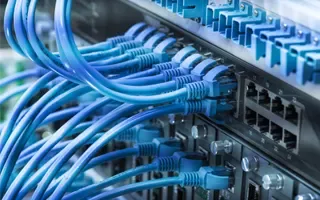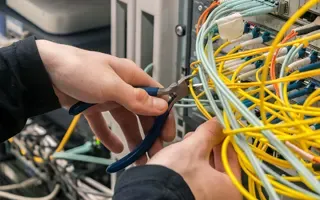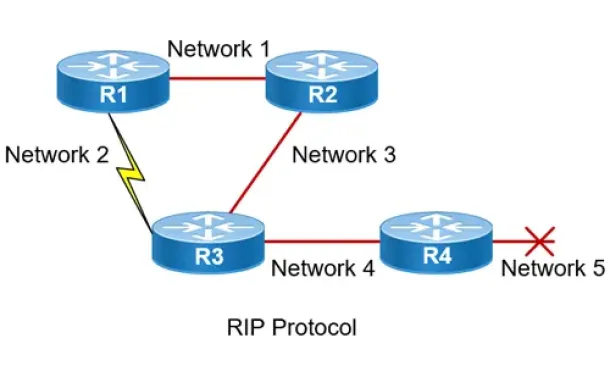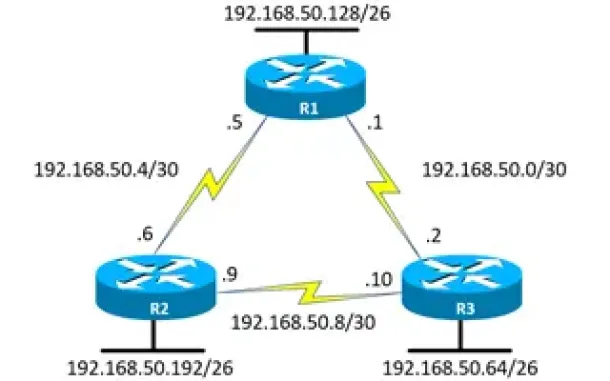Network Fundamentals: Top Picks
Network Fundamentals
The Importance of a Network Analyzer – Packet S...
Network Analyzers, also known as Packet Sniffers, are amongst the most popular network tools found inside any Network Engineer’s toolkit. A Network...
Network Fundamentals
Measuring Network Performance: Test Network Thr...
Measuring network performance has always been a difficult and unclear task, mainly because most engineers and administrators are unsure which appro...
Network Fundamentals
Introduction to Content Switching - Application...
Content switches (also sometimes called application switches) is a class of network device that is becoming increasingly common in medium to large ...
Network Fundamentals
Network Data Transmission
Network data transmission refers to the process of sending and receiving information between two or more devices connected to a network. It is a cr...
Featured Subcategories:
Netflow Articles:
Netflow
Netflow vs SNMP. Two Different Approaches to Ne...
SNMP (Simple Network Management Protocol) and Netflow are both popular protocols with admins, prized for their ability to give visibility over the ...
Netflow
Complete Guide to Netflow: How Netflow & its Co...
This article will cover the basics of Netflow, including its use cases, Netflow supported devices, Netflow history, and variants. We’ll also dive i...
Netflow
NetFlow Analyzer: Free Download, Step-by-Step I...
In our previous article we explained how a Netflow Analyzer can help you gain visibility into your user traffic, application traffic and data flows...
Netflow
Netflow: Monitor Bandwidth & Network Utilizatio...
Monitoring network traffic & bandwidth usage via Netflow is mandatory for any type and size network. Gaining visibility into user traffic, appl...
Network Protocols:
Domain Name System (DNS)
The DNS Protocol - Part 3: DNS Query Message Fo...
This section will deal with the analysis of the DNS packets by examining how DNS messages are formatted and the options and variables they contain....
Subnetting
IP Subnetting - Part 4: Routing Between Subnets
Routing and Communication between subnets is the main topic here. This article analyses communications between subnets. We provide examples on diff...
Subnetting
IP Subnetting - Part 3: Subnet Mask Bits & Anal...
So we have covered to some depth the subnetting topic, but there is still much to learn ! We are going to explain here the available subnet masks a...
TCP - UDP Protocol Analysis
Transmission Control Protocol - Part 2: Quick O...
As previously mentioned on a number of occasions, TCP is one of the two protocols that lives at the Transport layer and is used to carry data from ...
Supernetting & CIDR
What is Supernetting (Route Summarization) & Ho...
Supernetting is the opposite of of subnetting, and is also known as route aggregation or CIDR (Classless Inter-Domain Routing). Supernetting is a t...
TCP - UDP Protocol Analysis
TCP Header Anaylsis - Section 3: TCP Header Len...
The third field under close examination is the TCP Header length. There really isn't that much to say about the Header length other than to explain...
Subnetting
IP Subnetting - Part 2: Subnet Masks & Their Ef...
There are a few different ways to approach subnetting and it can get confusing because of the complexity of some subnets and the flexibility they o...
TCP - UDP Protocol Analysis
TCP Header Anaylsis - Section 2: TCP Sequence &...
This page will closely examine the Sequence and Acknowledgement numbers. The very purpose of their existence is related directly to the fact that t...
STP/ICMP Protocols:

Spanning Tree Protocol (STP)
Spanning Tree Protocol – Part 1: Understand STP...
One of the most used terms in network is LAN (Local Area Network). It’s a form of network that we encounter in our daily lives, at home, at work, s...
ICMP Protocol
ICMP Protocol - Part 6: Redirect Messages
The ICMP - Redirect Message is always sent from a gateway to the host and the example below will illustrate when this is used.
Putting it simply (...
ICMP Protocol
ICMP Protocol - Part 4: Destination Unreachable...
The 'ICMP Destination unreachable' message is quite interesting, because it doesn't actually contain one message, but infact six! This means that t...
ICMP Protocol
ICMP Protocol - Part 2: Echo / Echo Reply (Ping...
As mentioned in the previous page, an Echo is simply what we networking engineers call a 'ping'. The Echo Reply is, as most would guess, the ...
Your IP address:
3.145.191.169
Wi-Fi Key Generator
Follow Firewall.cx
Cisco Password Crack
Decrypt Cisco Type-7 Passwords on the fly!

VLAN Networks
VTP Pruning
VTP (VLAN Trunking Protocol) pruning is a feature that is used in Cisco switches to reduce unnecessary traffic in VLAN (Virtual Local Area Network) trun...

VLAN Networks
VTP Introduction & Modes
The invention of VLANs was very much welcomed by all engineers and administrators, allowing them to extend, redesign and segment their existing network ...

VLAN Networks
Comparing Traditional Flat & VLAN Networks
Designing and building a network is not a simple job. VLANs are no exception to this rule, in fact they require a more sophisticated approach because of...

VLAN Networks
VLANs - Access & Trunk Links
If you've read our previous article The VLAN Concept - Introduction to VLANs then you should feel comfortable with terms such as 'VLAN', 'Sta...

Routing
Routing Information Protocol - RIP
Routing Information Protocol (RIP) is a distance-vector routing protocol that is commonly used in small to medium-sized networks. It is one of the...

Routing
Introduction to Routing Protocols
Distance Vector, Link State RIP, IGRP, EIGRP, OSPF
Routing protocols were created for routers. These protocols have been designed to allow the exchan...

Routing
OSPF - Part 4: OSPF Neighbor States – OSPF Neighbor ...
This is the third article of our OSPF series which analyzes the different OSPF States routers go through during the OSPF discovery and neighbor forming ...

Routing
Enhanced Interior Gateway Routing Protocol - EIGRP
Enhanced Interior Gateway Routing Protocol (EIGRP), similar to IGRP, is a Cisco proprietary routing protocol that is used to exchange routing informatio...
Network Address Translation - NAT
Dynamic NAT - Part 1
Dynamic NAT is the second NAT mode we're going to talk about. Dynamic NAT, like Static NAT, is not that common in smaller networks but you'll find it us...
Network Address Translation - NAT
Static NAT - Part 2
The previous page (Static NAT - Part 1) helped us understand what exactly happens with Static NAT and how it works, and we saw a few examples of how to ...
Network Address Translation - NAT
Network Address Translation (NAT) Overload - Part 2
In our previous article, Network Address Translation (NAT) Overload - Part 1, we explained what NAT Overload is and how it works. This page deals with t...
Network Address Translation - NAT
Static NAT - Part 1
Static NAT (also called inbound mapping) is the first mode we're going to talk about and also happens to be the most uncommon between smaller networks.
...




















